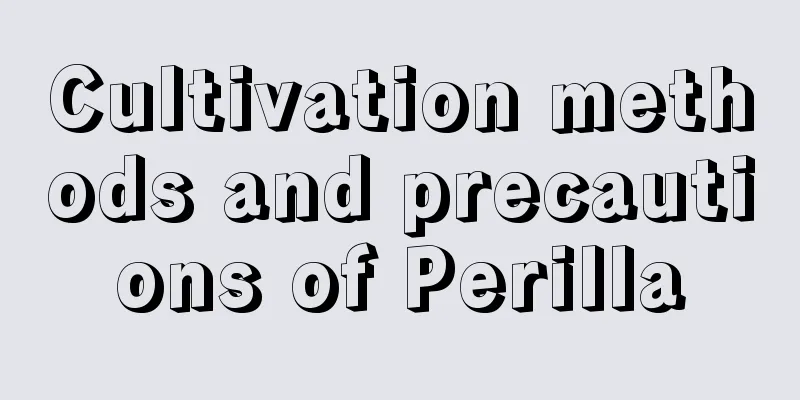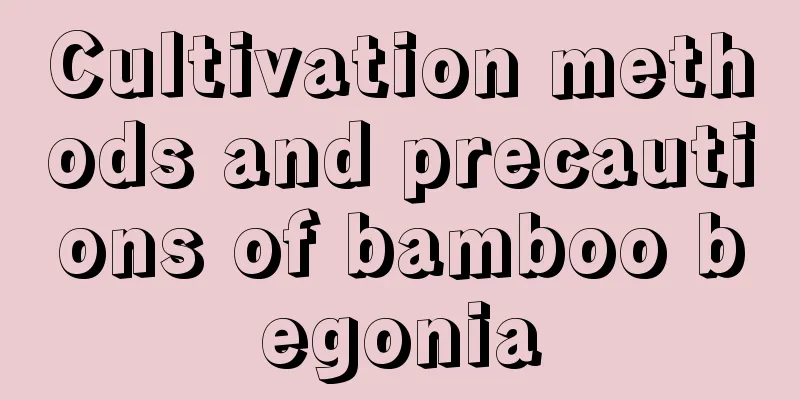Cultivation methods and precautions of Perilla

1. Maintenance methods1. Soil: It does not have high requirements for soil, as long as fertile and loose sandy soil is sufficient. Just be careful not to use saline-alkali soil. 2. Light: It is suitable for growing in places with soft light, so avoid long-term light exposure and control the daily light amount. If it is placed on the balcony, pay attention to shade. 3. Temperature: It likes warm and humid climate and is very cold-resistant. However, although it is cold-resistant, it will grow very slowly when the temperature is below 19℃. Try to keep it in an environment above 20℃. 4. Flower pot: It likes flower pots with high air permeability and good drainage, so porcelain pots are the best choice for Perilla. Be sure to place some broken tiles on the holes at the bottom of the pot to facilitate air circulation and water seepage. 2. Breeding techniques1. Cultivation: Perilla is usually cultivated using rhizomes and is planted from November to April of the following year. Choose thicker rhizomes, cut them into 5-10 cm lengths, bury them in the soil, and seedlings will emerge in half a month. 2. Summer: It is very afraid of direct sunlight. In summer, be sure to put it in a cool place and keep the soil moist, because it is very afraid of drought. 3. Problem diagnosis and treatment1. Root rot: If drainage is not timely, it will easily get root rot, which will cause great damage to its rhizomes. The treatment method is also very simple. Pay attention to timely drainage and water the roots with 5% lime water. 2. Red spider mites: This is a common pest and disease. Red spider mites will damage its leaves and reproduce very quickly. They need to be controlled in time. Just spray them with three-way miticide. IV. Other issues1. Is it poisonous? Perilla is not poisonous and there is no problem during maintenance, but try not to eat it. 2. Can it be given as a gift: It is fragrant when it blooms and has a certain ornamental value. It is also one of the famous seven autumn herbs and is very meaningful as a gift to others. |
<<: Cultivation methods and precautions of bird's tail flower
>>: Cultivation methods and precautions of ponkan
Recommend
The role and efficacy of Imperata root
1. Function and efficacy: 1. Therapeutic effects:...
Why don't my peonies bloom?
1. Improper pruning 1. Reason: When the peony bra...
Is red maple suitable for indoor cultivation?
1. Is it suitable for indoor breeding? Red maple ...
Tradescantia pictures
Tradescantia short profile Introduction to Trades...
What to do if the leaves of the peace lily turn yellow and fall off
1. Loosen the soil appropriately Reason: If the s...
Can asparagus fern be watered with Coca Cola? The correct way to water asparagus fern with Coca Cola
Can asparagus fern be watered with Coke? Asparagu...
How to grow jasmine potted plants
Jasmine growth habits Jasmine likes to grow in wa...
Which month is the best to dig elm trees in the wild? How to plant the elm trees dug in the wild?
1. Which month to dig It is generally better to h...
Can chia seeds be planted?
Can chia seeds be grown? Chia seeds can be plante...
Date tree seedling raising method and time
Jujube trees are common fruit trees. The ripe juj...
How to trim glass jade
Time and method During the seedling growth period...
Don’t use these “3 types” of water to water flowers. If you water one, the whole flower will wither and you will regret it.
Especially the issue of watering, which is really...
How to water Deutzia
1. Watering during the seedling stage This plant ...
How to cultivate the fortune tree
Growth environment Growth habit If you want to kn...
Why can't we grow holly at home? Is holly suitable for growing at home?
Is it good to grow holly at home? It is good to p...









